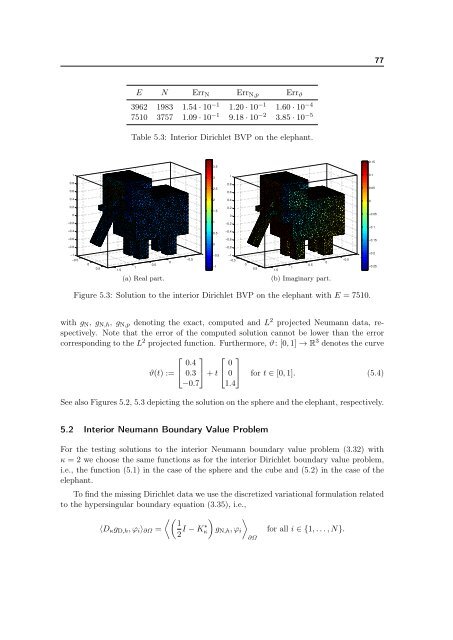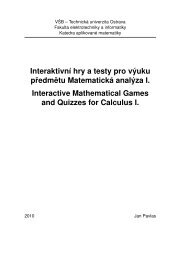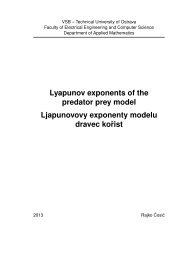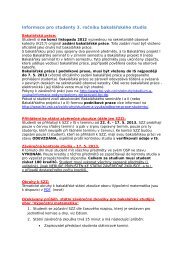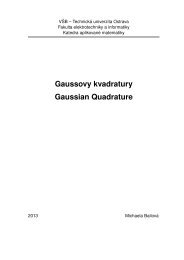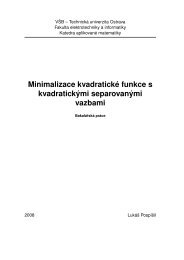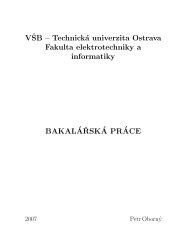The Boundary Element Method for the Helmholtz Equation ... - FEI VÅ B
The Boundary Element Method for the Helmholtz Equation ... - FEI VÅ B
The Boundary Element Method for the Helmholtz Equation ... - FEI VÅ B
You also want an ePaper? Increase the reach of your titles
YUMPU automatically turns print PDFs into web optimized ePapers that Google loves.
77E N Err N Err N,p Err ϑ3962 1983 1.54 · 10 −1 1.20 · 10 −1 1.60 · 10 −47510 3757 1.09 · 10 −1 9.18 · 10 −2 3.85 · 10 −5Table 5.3: Interior Dirichlet BVP on <strong>the</strong> elephant.3.50.151310.10.80.62.50.80.60.050.420.400.201.50.20−0.05−0.2−0.410.5−0.2−0.4−0.1−0.6−0.80−0.6−0.8−0.15−1−0.500.50.511.5(a) Real part.0−0.5−1−0.5−1−1−0.500.500.511.5(b) Imaginary part.−0.5−1−0.2−0.25Figure 5.3: Solution to <strong>the</strong> interior Dirichlet BVP on <strong>the</strong> elephant with E = 7510.with g N , g N,h , g N,p denoting <strong>the</strong> exact, computed and L 2 projected Neumann data, respectively.Note that <strong>the</strong> error of <strong>the</strong> computed solution cannot be lower than <strong>the</strong> errorcorresponding to <strong>the</strong> L 2 projected function. Fur<strong>the</strong>rmore, ϑ: [0, 1] → R 3 denotes <strong>the</strong> curve⎡ ⎤ ⎡ ⎤0.4 0ϑ(t) := ⎣ 0.3 ⎦ + t ⎣ 0 ⎦ <strong>for</strong> t ∈ [0, 1]. (5.4)−0.7 1.4See also Figures 5.2, 5.3 depicting <strong>the</strong> solution on <strong>the</strong> sphere and <strong>the</strong> elephant, respectively.5.2 Interior Neumann <strong>Boundary</strong> Value ProblemFor <strong>the</strong> testing solutions to <strong>the</strong> interior Neumann boundary value problem (3.32) withκ = 2 we choose <strong>the</strong> same functions as <strong>for</strong> <strong>the</strong> interior Dirichlet boundary value problem,i.e., <strong>the</strong> function (5.1) in <strong>the</strong> case of <strong>the</strong> sphere and <strong>the</strong> cube and (5.2) in <strong>the</strong> case of <strong>the</strong>elephant.To find <strong>the</strong> missing Dirichlet data we use <strong>the</strong> discretized variational <strong>for</strong>mulation relatedto <strong>the</strong> hypersingular boundary equation (3.35), i.e.,⟨D κ g D,h , ϕ i ⟩ ∂Ω = 12 I − K∗ κg N,h , ϕ i∂Ω<strong>for</strong> all i ∈ {1, . . . , N}.


